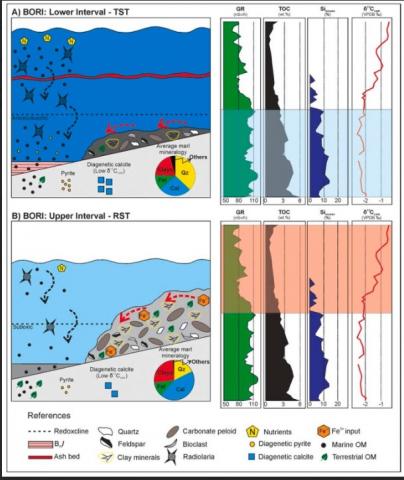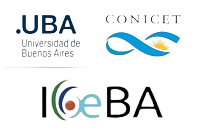Ignacio A. Capelli, Roberto A. Scasso, Jorge E. Spangenberg, Diego A. Kietzmann, Mercedes Prámparo, Thierry Adatte
2 024
Marine and Petroleum Geology Volume 163, May 2024,
The 50 m-thick Berriasian organic-rich interval (BORI) of the Vaca Muerta Formation (Neuquén Basin, Argentina) represents one of the most attractive stratigraphic intervals for unconventional hydrocarbon exploration in the unit. Nevertheless, little is known about the environmental conditions prevailing during the accumulation of the sediments. To unravel the causes that favored the preservation of the organic matter (OM) in the BORI, a detailed multiproxy sedimentological approach was conducted. The study included the analyses of microfacies, palynological content, calpionellid-calcisphere dinocysts, mineralogy, spectral gamma-ray, inorganic geochemistry, Rock-Eval pyrolysis and stable carbon isotopes of whole rock carbonate (δ13Ccarb), and associated OM (δ13Corg). The BORI presents a late Early to early Late Berriasian age and is subdivided into a lower and upper interval. The lower interval (25.6 m-thick) is primarily formed by radiolaritic wackestones and presents higher total organic carbon (TOC) content (4.2 wt% on average), mainly in the form of amorphous OM (AOM), with variable contribution of phytoclasts. The geochemical analyses (Si, Ni, Cu, Mo, U, V) indicate high productivity of the water column and overall sea bottom anoxia. Oppositely, the upper interval (24.4 m-thick) is mostly constituted by peloidal packstones/grainstones and presents a lower TOC content (1.5 wt% on average) mainly constituted by phytoclasts, with variable contribution of AOM. A decrease of the productivity and an increase of sea bottom oxygenation is recorded based on the geochemical analyses. The high OM content of the BORI responds to the combination of high productivity of the water column and sea bottom anoxia in response to the Berriasian transgression and a worldwide paleoclimatic change towards more humid conditions. The results of our study position the BORI as an attractive interval for unconventional hydrocarbon production due to its high TOC, low bulk clay mineral and high biogenic quartz content, granting an adequate geomechanical behavior.

